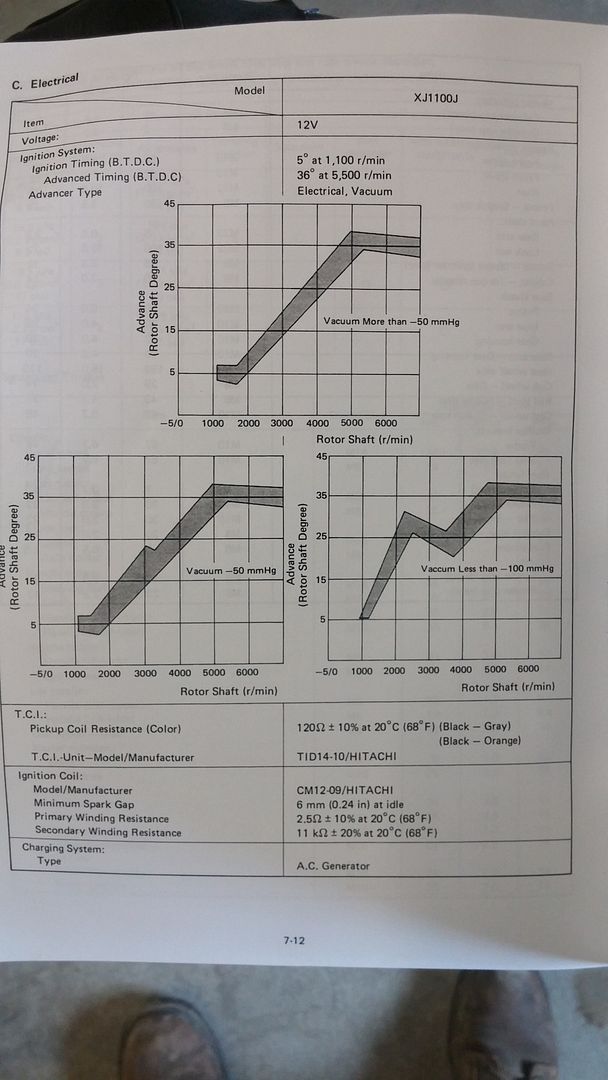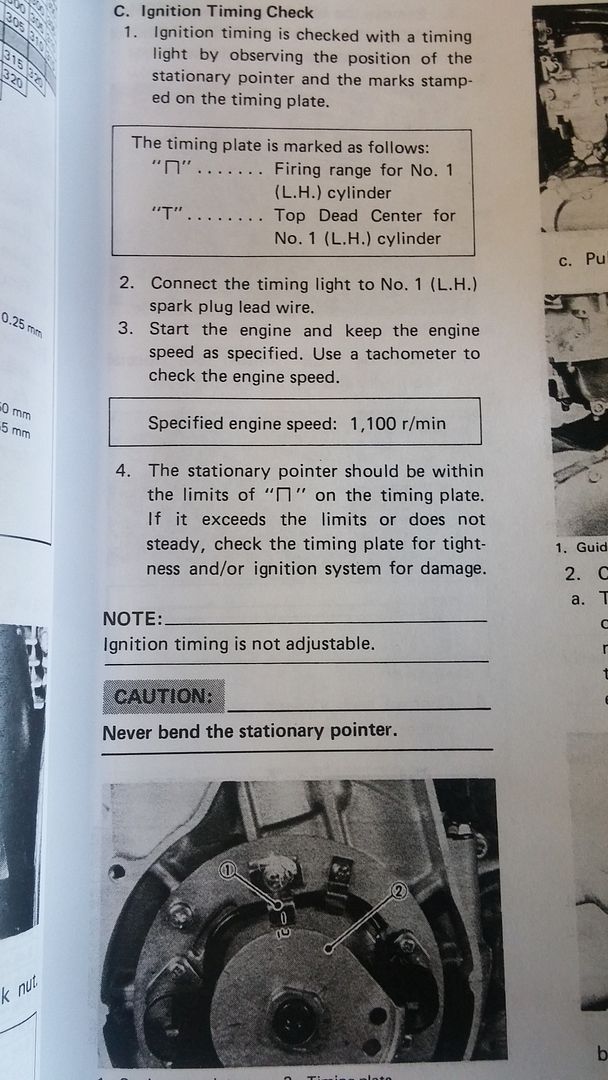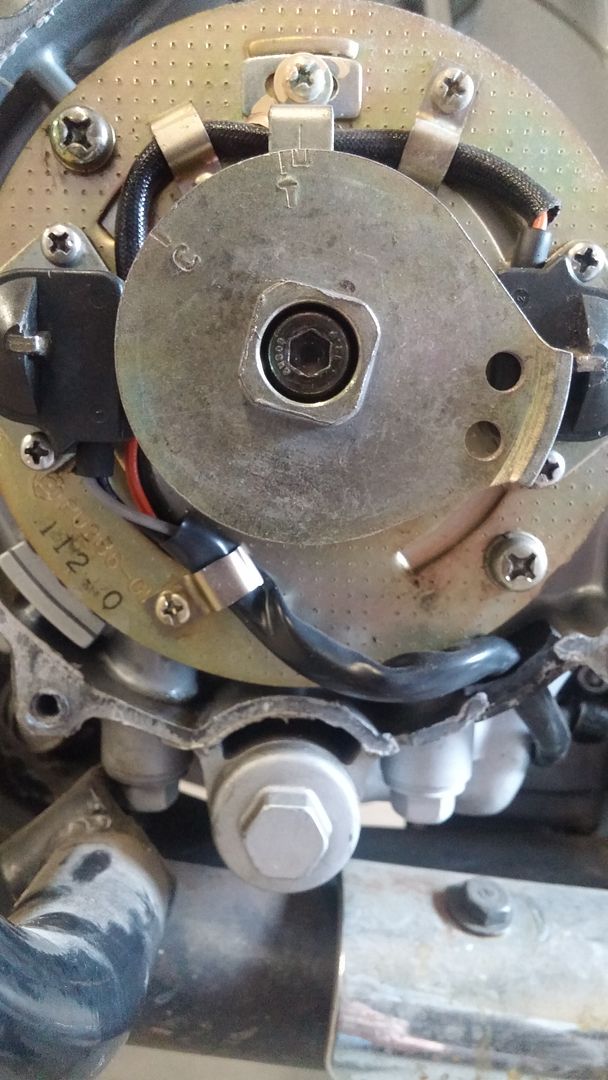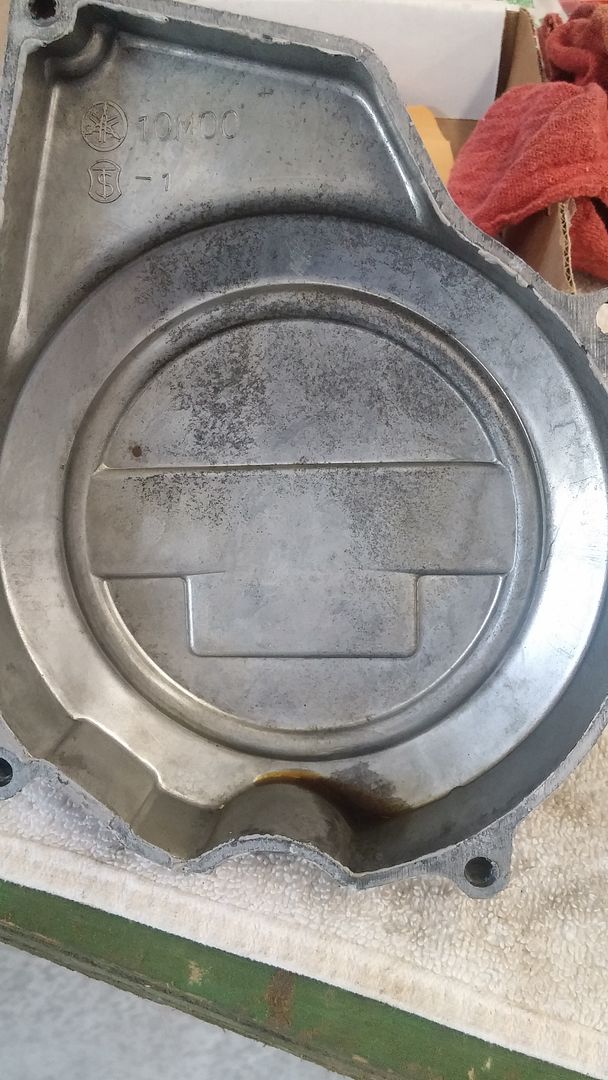I currently have 2 XJs, my daily rider and another that I picked up cheap last fall and have rehabbed over the past months. Mine doesn't seem to have the same acceleration as the other one when I crack open the throttle. It is completely stock in terms of exhaust, air box, and carbs (which were broken down completely, run through the ultra sonic, butterfly shaft seals replaced, stock jetting, float heights correct at 23mm and verified with clear tube), then bench synched / vacuum synched, and valves are shimmed properly. Bike #2 has a Mac 4-2 with turn outs, stock air box, and the carbs got the same treatment as bike #1, valves shimmed properly. I'm not sure if the jetting in #2 is stock as I stupidly never bothered to look at them closely when I had them apart.
The one major difference is my bike has the 850 FD while #2 has the stock FD...but here is how I compared the acceleration between the 2 bikes. Bike #2 runs 3500 rpms @ 55 mph in 5th gear and pulls pretty well when I hit the throttle. I compared that to my bike at 3500 rpms in 4th gear to compensate for the taller gearing in the FD, and it makes more noise when I open it up but it doesn't have the acceleration that #2 has.
So now I'm wondering if maybe my timing isn't advancing properly on my bike? Here is what the service manual says, 5 degrees BTDC @ 1100 rpm and 36 degrees BTDC @ 5500 rpm --
[IMG] [/IMG]
[/IMG]
This shows how to check the timing and where it is supposed to be at idle --
[IMG] [/IMG]
[/IMG]
My timing plate --[IMG] [/IMG]
[/IMG]
So how do I verify that the timing is really advancing to 36 degrees BTDC at 5500 rpm? The vacuum advance is controlled by a small sensor under the tank, has a vacuum line that connects to #2 carb body and wiring connector that goes into the harness to the TCI. The change in vacuum at varying rpm must alter the electrical signal sent to the TCI?
Anybody know how to verify proper advance? Or think that something else might be causing the sluggish acceleration?
On a side note, when I removed the timing cover I found a small amount of oil inside the cover --
[IMG] [/IMG]
[/IMG]
Does this mean the crank seal under the timing plate is going bad? Thanks for your thoughts.
The one major difference is my bike has the 850 FD while #2 has the stock FD...but here is how I compared the acceleration between the 2 bikes. Bike #2 runs 3500 rpms @ 55 mph in 5th gear and pulls pretty well when I hit the throttle. I compared that to my bike at 3500 rpms in 4th gear to compensate for the taller gearing in the FD, and it makes more noise when I open it up but it doesn't have the acceleration that #2 has.
So now I'm wondering if maybe my timing isn't advancing properly on my bike? Here is what the service manual says, 5 degrees BTDC @ 1100 rpm and 36 degrees BTDC @ 5500 rpm --
[IMG]
 [/IMG]
[/IMG]This shows how to check the timing and where it is supposed to be at idle --
[IMG]
 [/IMG]
[/IMG]My timing plate --[IMG]
 [/IMG]
[/IMG]So how do I verify that the timing is really advancing to 36 degrees BTDC at 5500 rpm? The vacuum advance is controlled by a small sensor under the tank, has a vacuum line that connects to #2 carb body and wiring connector that goes into the harness to the TCI. The change in vacuum at varying rpm must alter the electrical signal sent to the TCI?
Anybody know how to verify proper advance? Or think that something else might be causing the sluggish acceleration?
On a side note, when I removed the timing cover I found a small amount of oil inside the cover --
[IMG]
 [/IMG]
[/IMG]Does this mean the crank seal under the timing plate is going bad? Thanks for your thoughts.






Comment